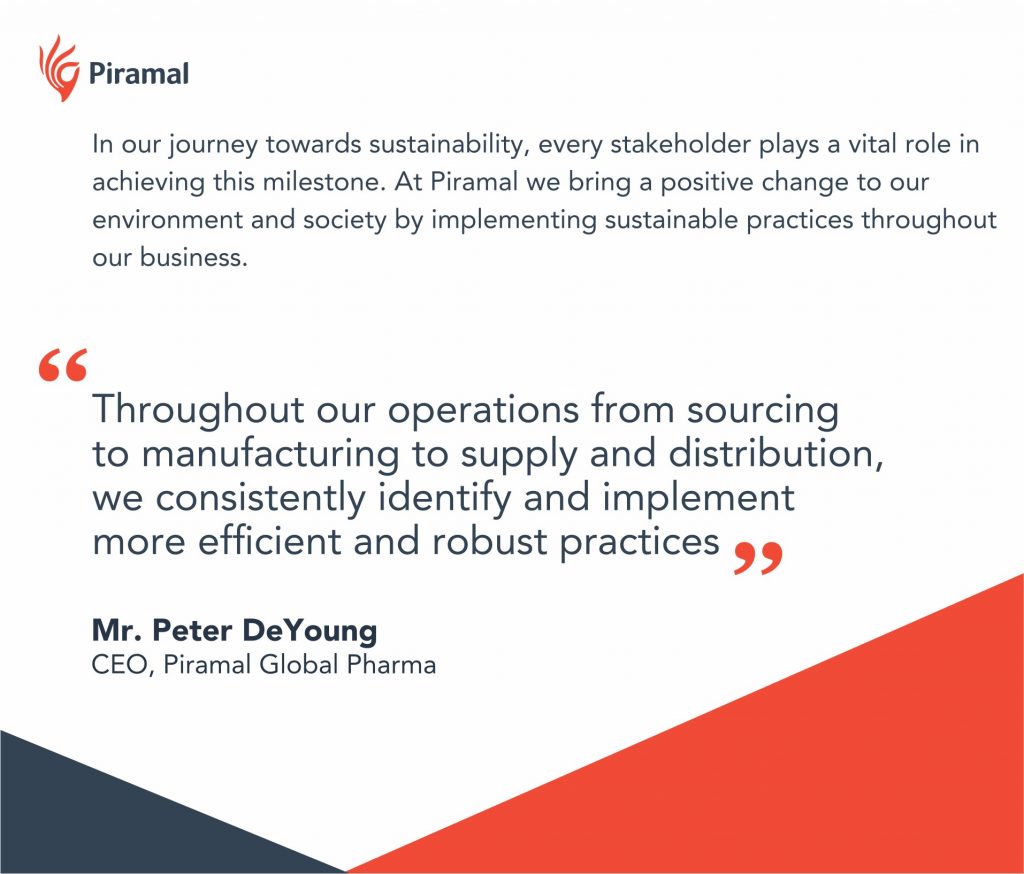Sustainability,
Protection,
Efficiency

Corporate
Responsibility
Environmental Stewardship
‘Care for the Environment’, one of our core commitments, is enunciated in our Environment, Safety and Health (EHS) policy. These policies guide us to pursue global standards across the entire value chain, projects & process design, day-to-day operations, and responsible management of non-product outputs. We are committed to manufacturing products safely and in an environmentally responsible manner.1
We aspire to minimize the impact on the environment and maximize the effective use of resources. Towards this cause, we encourage responsible environmental behavior amongst staff and stakeholders at all levels. Concerted efforts are made to conserve energy, assess viable energy-efficient projects and take initiatives to help environmental stability. We have taken several initiatives to reduce our greenhouse gas emissions.1

- Participation in Carbon Disclosure Project (CDP)
- Voluntary disclosure of environmental information such as climate change and water security information
- Upgradation of effluent treatment plants
- Zero Liquid Discharge in our Active Pharmaceutical Ingredients (API) sites that include adoption of best-in-class technology and equipment including volute press for sludge separation, membrane-based systems, multi-effect evaporators and agitated thin film dryers.
|
- Our GHG emissions are generated from coal, agro briquettes, diesel, natural gas, furnace oil, and electricity consumption.1
- Our efforts and actions have helped reduce our Scope 1 emissions and Scope 2 emissions.1
- Automated packaging line at our Bethlehem facility addresses the issue of GHG emissions and minimizes negative ecological effects.1
No open air transfer of materials into the environment*
|
- We implemented a Tree census program aimed to take inventory of tree species across our sites.1
- Initiatives such as steam condensation to recirculate to boiler modifications in manufacturing processes and use of efficient alternatives to reduce tap water flow2
- Total water usage by manufacturing locations reduced by 8%.1
- Minimising the generated waste at source, wherever practicable and recycle major portion of the rest1
- Monitoring our waste management processes regularly so that adequate and safe treatment is made available for the waste generated across our facilities1
- Recycling and processing of plastic waste.1
- Hazardous waste co-processing1
- All process wastewater is treated onsite before discharge to the sanitary sewer.
- No added tractor-trailer traffic/idling onsite, thereby reducing emissions
- Sluice gate onsite to protect waterways in the event of a liquid release
- Containment collected precipitation is tested/inspected before discharge to the environment. Precipitation is collected in wastewater tanks for treatment before discharge to the sanitary sewer.
- Protective sock/filters are placed in affected inlet.
- All scrap metal from the facility is placed into a scrap container for collection.
- We have a 20-yard metal dumpster for common ferrous metals and various 55-gallon drums for more valuable metals (e.g. copper, aluminium and stainless steel)
- Scrap drums from the process are cleaned and stored.
- The scrap metal and drums are both taken away by a local scrap metal recycler.
- Ensures directional lighting for a brighter light
- Provides greater energy efficiency and longer life
Piramal Critical Care
Find. Read. Learn

News & Events
Learn more about upcoming events, new press releases, and the latest news from Piramal Critical Care.

Contact & Support



